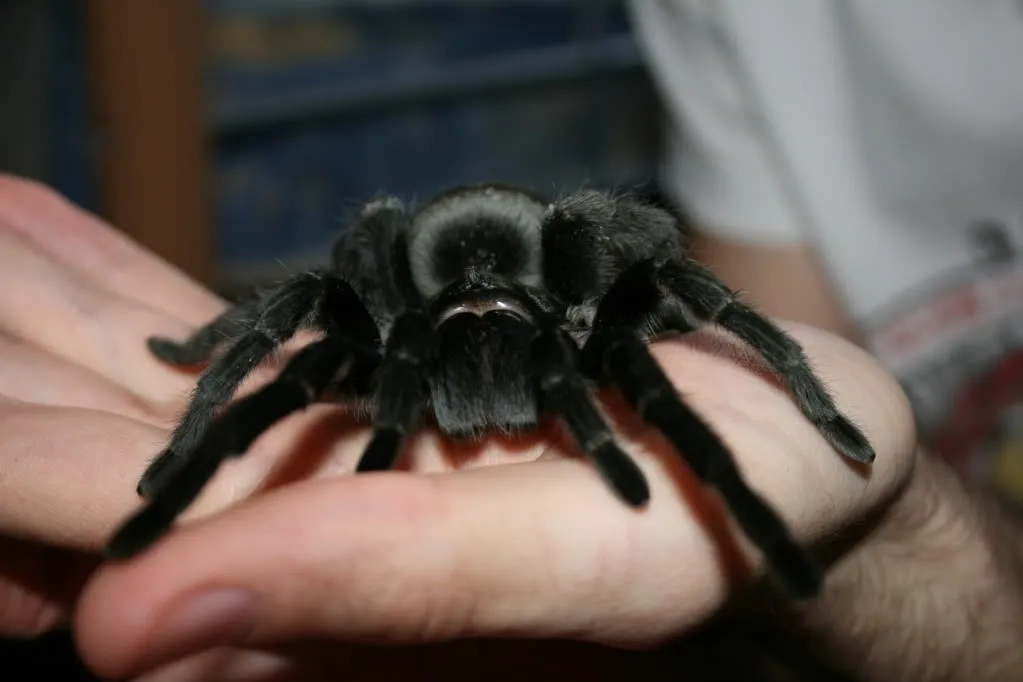Choosing the Right Enclosure for Your Brazilian Black Tarantula
Setting up the perfect enclosure is crucial for the health and well-being of your Brazilian Black Tarantula (Grammostola pulchra). This guide provides a comprehensive overview of building an ideal habitat, ensuring your tarantula thrives. From selecting the right size to maintaining optimal environmental conditions, we’ll cover all aspects of enclosure setup. A well-designed enclosure not only provides a safe and comfortable living space but also allows you to observe and enjoy your fascinating pet. Understanding the specific needs of a Brazilian Black Tarantula will help you create an environment where it can flourish, displaying its natural behaviors and living a long, healthy life. Proper housing is the cornerstone of responsible tarantula ownership.
Enclosure Size and Dimensions
The size of your Brazilian Black Tarantula enclosure is a critical factor. Choosing the right dimensions directly impacts your tarantula’s comfort and ability to move around. The general rule is to provide an enclosure that is roughly twice the tarantula’s leg span in width and length. The height should be sufficient to allow for at least a few inches of substrate and enough vertical space for the tarantula to move around. Too large an enclosure can make it harder for the tarantula to find food and feel secure, while too small an enclosure can restrict movement and lead to stress. Consider the adult size of your tarantula when selecting an enclosure, even if you are starting with a juvenile.
Juvenile vs Adult Enclosure Needs
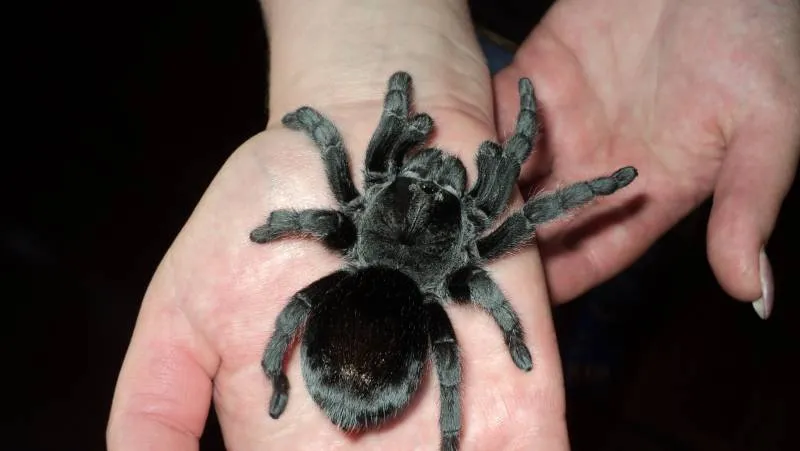
Juvenile Brazilian Black Tarantulas require smaller enclosures than adults. Starting a juvenile in too large an enclosure can make it difficult for them to hunt and feel safe. As the tarantula grows, you will need to upgrade to a larger enclosure. For a spiderling, a deli cup or small plastic container with adequate ventilation can suffice. For sub-adults, a 10-gallon tank might be appropriate, and for fully grown adults, a 20-gallon long or similar-sized enclosure is often ideal. Always consider the individual tarantula’s size and growth rate when determining when to upgrade the enclosure. Regular monitoring and adjustments are key to ensuring a comfortable and secure environment.
Materials for Your Brazilian Black Tarantula Enclosure
The material of your tarantula enclosure is another important consideration. The choice of material impacts factors like visibility, durability, and ease of maintenance. The primary options are glass, acrylic, and plastic, each with its own set of advantages and disadvantages. Selecting the right material ensures the enclosure is safe, secure, and provides a good viewing experience. The material should also be easy to clean and maintain to ensure a healthy environment for your tarantula.
Glass, Acrylic, or Plastic
Glass enclosures offer excellent visibility and are relatively easy to clean. They are sturdy and resistant to scratching. However, glass enclosures can be heavy and more prone to breaking if dropped. Acrylic enclosures are lightweight, offer excellent clarity, and are highly resistant to cracking. They are also good insulators. The downside is that they can scratch easily and are sometimes more expensive than glass. Plastic enclosures are often the most affordable option, being lightweight and durable. The visibility might be less than with glass or acrylic, and some plastics may not be as scratch-resistant or offer as many aesthetic choices. The choice ultimately depends on your budget, aesthetic preferences, and the specific needs of your tarantula.
Pros and Cons of Each Material
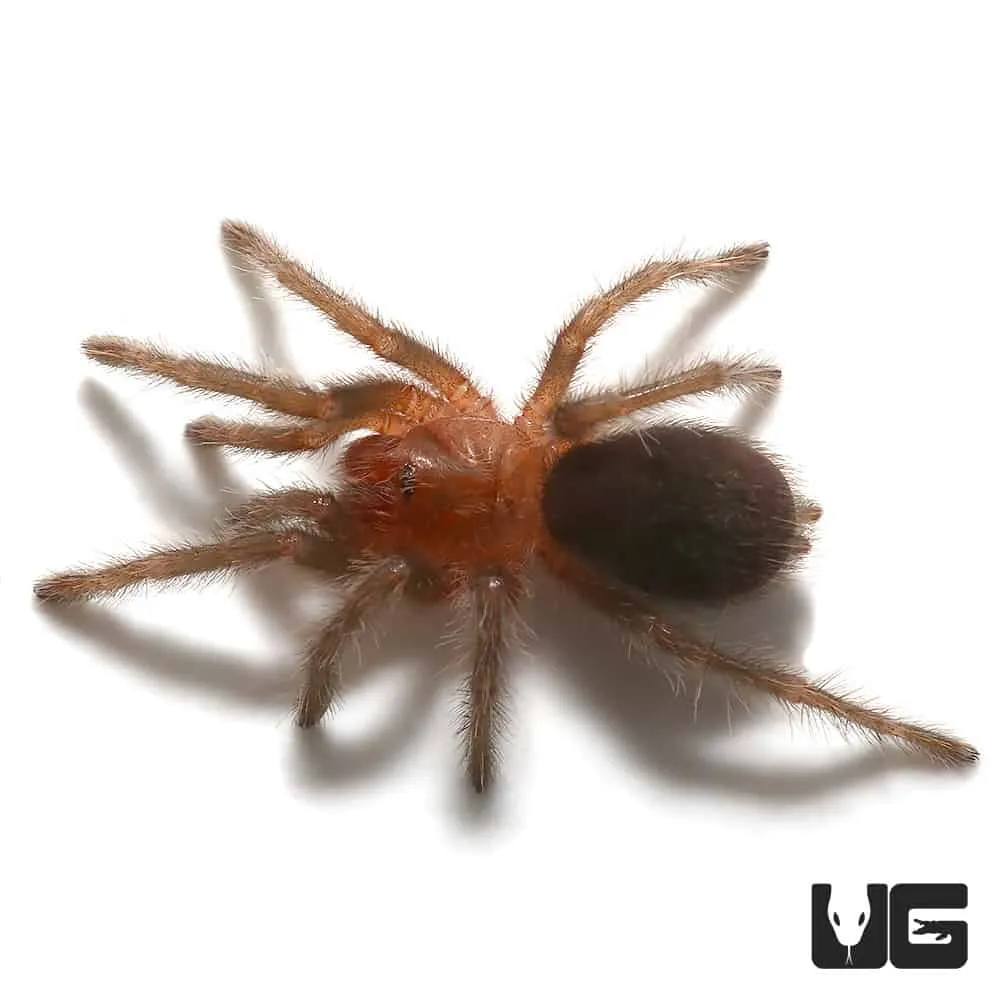
- Glass enclosures offer excellent visibility and are easy to clean but are heavy and can break.
- Acrylic enclosures are lightweight and offer great clarity, but they can scratch easily.
- Plastic enclosures are affordable and durable but may have less visibility and fewer aesthetic options.
Creating the Perfect Substrate
The substrate is the foundation of your Brazilian Black Tarantula’s enclosure. It serves multiple purposes, including providing a comfortable surface for the tarantula to walk on, allowing them to burrow, helping to maintain humidity levels, and absorbing waste. The right substrate choice is essential for creating a healthy environment. It should be non-toxic, capable of absorbing moisture, and free from harmful chemicals. Regularly replacing the substrate ensures that the enclosure remains clean and safe for your tarantula.
Types of Substrate for Brazilian Black Tarantulas
Several substrate options are suitable for Brazilian Black Tarantulas. A mix of peat moss, coco fiber, and vermiculite is often recommended. Peat moss helps retain moisture and create a slightly acidic environment that tarantulas generally prefer. Coco fiber (also known as coco coir) is an excellent absorbent and helps maintain humidity. Vermiculite improves aeration and drainage. Other options include topsoil (ensure it is free of fertilizers and pesticides) and sphagnum moss. The ideal substrate mix provides a balance of moisture retention, aeration, and drainage. Always research the specific needs of your tarantula and choose a substrate accordingly.
Depth and Moisture Levels
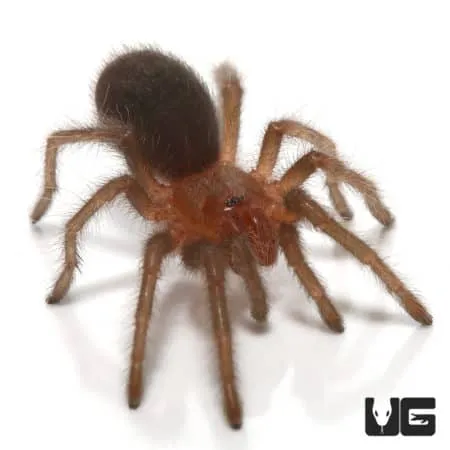
The depth of the substrate is important. For terrestrial tarantulas like the Brazilian Black, a substrate depth of 4-6 inches is often recommended. This allows the tarantula to burrow if it chooses and provides a secure environment. Moisture levels are crucial for maintaining humidity. Lightly mist the substrate with dechlorinated water every few days, depending on the humidity levels in your home. The top layer of the substrate should be allowed to dry out between mistings to prevent mold growth, but the lower levels should remain slightly moist. Use a hygrometer to monitor humidity levels.
Essential Enclosure Decorations
Adding decorations to your Brazilian Black Tarantula’s enclosure enhances its environment, provides enrichment, and can contribute to the tarantula’s well-being. Decorations offer places to hide, explore, and feel secure. The right decorations not only improve the aesthetic appeal of the enclosure but also encourage natural behaviors. Always select decorations that are non-toxic, safe, and suitable for tarantulas.
Hides and Shelter
Providing a hide or shelter is crucial for your Brazilian Black Tarantula. Tarantulas are naturally shy and often hide to feel safe. A hide can be anything from a piece of cork bark, a half-log, or a commercially available tarantula hide. Ensure the hide is appropriately sized and positioned in a way that the tarantula can easily access it. A hide allows the tarantula to regulate its stress levels and feel secure in its environment. Multiple hides in the enclosure will allow the tarantula to have a variety of options.
Water Dish and Placement
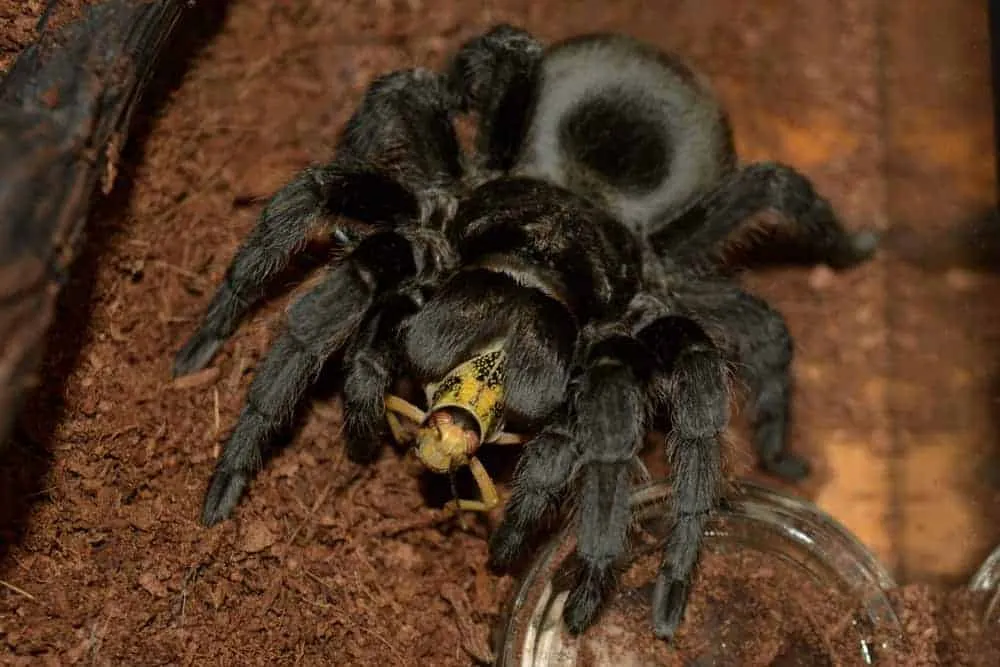
A shallow water dish is essential for your Brazilian Black Tarantula to drink from. Choose a dish that is stable and won’t tip over. The water dish should be placed in a location that the tarantula can easily access, typically on the substrate. Use a small sponge or marbles in the water dish to prevent smaller tarantulas from drowning. Regularly clean and refill the water dish with dechlorinated water to maintain hygiene and ensure the tarantula has access to fresh water at all times. This will also aid in maintaining humidity levels within the enclosure.
Temperature and Humidity Control
Maintaining the correct temperature and humidity is critical for the health and well-being of your Brazilian Black Tarantula. These factors directly influence its ability to molt, eat, and thrive. Monitoring the environment using appropriate tools and making necessary adjustments helps ensure your tarantula’s comfort and well-being. Careful management of temperature and humidity prevents health problems and promotes a natural life cycle.
Monitoring Tools
Use a thermometer and a hygrometer to monitor the temperature and humidity inside the enclosure. Place these instruments in a spot where you can easily see them. Digital thermometers and hygrometers are recommended for accurate readings. Regularly check the readings to ensure they remain within the ideal range for your tarantula. This will allow you to make timely adjustments to the environment and keep your tarantula healthy.
Heating Options

Brazilian Black Tarantulas thrive in a temperature range of 75-85°F (24-29°C). Supplemental heating might be needed in cooler environments. However, direct heat sources, like heat lamps, should be avoided, as they can overheat the enclosure. Instead, use a low-wattage heat mat placed on the side or back of the enclosure, regulated by a thermostat. This provides gentle, consistent heat without drying out the enclosure. Ensure the heat mat is not directly under the substrate to avoid overheating the tarantula. Monitor the temperature carefully to prevent overheating.
Ventilation and Airflow
Adequate ventilation is essential to prevent the buildup of harmful gases, such as ammonia, which can be produced by waste and decaying food. Good airflow also helps to prevent mold growth and maintains optimal humidity levels within the enclosure. Proper ventilation ensures the tarantula’s respiratory health and overall well-being. Proper ventilation, in combination with other environmental controls, is vital for creating a healthy habitat.
Preventing Mold and Stagnant Air
Provide adequate ventilation by ensuring the enclosure has ventilation holes or a screened top. The placement and number of these openings is important. Ensure proper ventilation by positioning the enclosure in an area with good airflow and avoiding overcrowding. Regular cleaning of the enclosure and removal of uneaten food also helps prevent mold growth and maintains healthy air quality. The substrate should also be allowed to dry out slightly between mistings to prevent mold growth. Monitoring humidity is key to preventing stagnant air.
Feeding and Maintenance
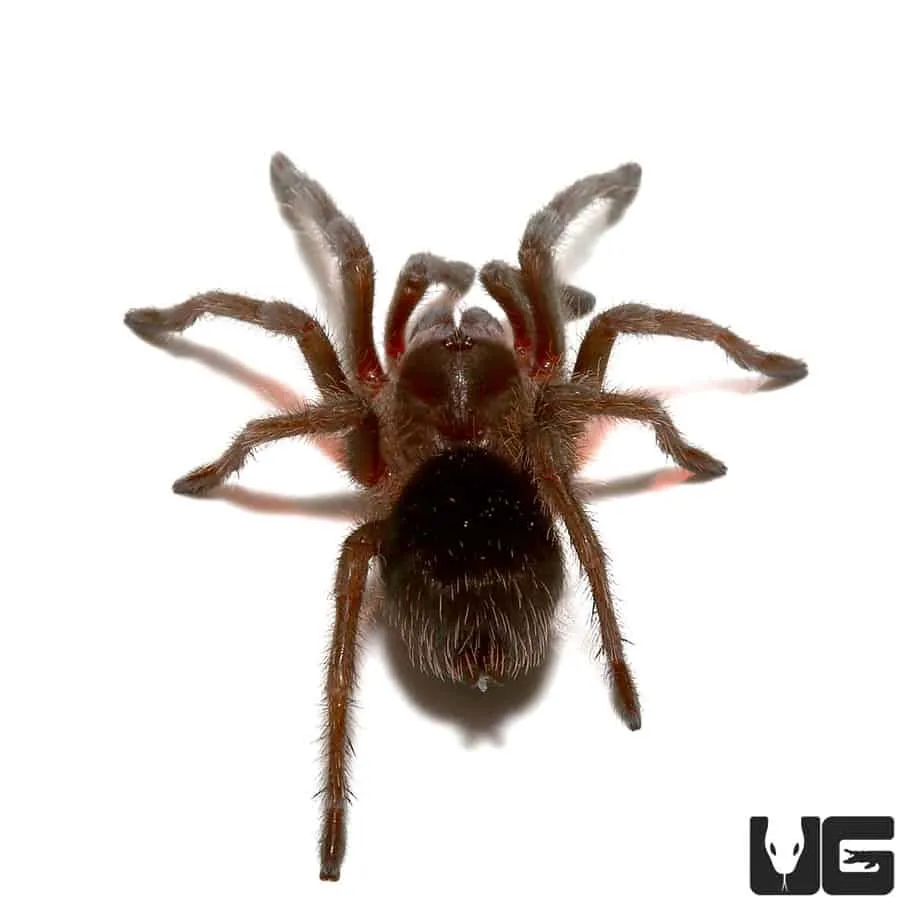
Feeding and maintaining the enclosure is necessary to create a healthy and thriving environment for your Brazilian Black Tarantula. Regular cleaning and appropriate feeding habits contribute to the tarantula’s health and well-being. Proper maintenance practices are critical to ensuring your tarantula lives a long and healthy life.
Cleaning Your Enclosure
Spot clean the enclosure regularly, removing uneaten food, molted exoskeletons, and any visible waste. The frequency depends on the size of the tarantula and how quickly the enclosure becomes soiled. Replace the substrate entirely every few months, or more frequently if needed. During the substrate replacement, thoroughly clean and disinfect the enclosure. Use a pet-safe disinfectant and rinse the enclosure thoroughly before replacing the substrate. Regular cleaning and maintenance are key to preventing disease and keeping your tarantula healthy.
Handling and Safety
Brazilian Black Tarantulas are generally docile, but it is still important to handle them with care and respect. Minimize handling, as it can stress the tarantula. If you must handle it (e.g., for enclosure maintenance), do so gently and slowly. Avoid sudden movements. Never hold a tarantula over a hard surface. Always wash your hands thoroughly before and after handling. Ensure the enclosure is secure to prevent escapes. Regularly inspect the enclosure for cracks or other damage. Being mindful of safety protocols during maintenance will minimize stress for the tarantula and protect the keeper.
In conclusion, creating the perfect Brazilian Black Tarantula enclosure involves careful planning, consideration of specific needs, and consistent maintenance. By following these guidelines, you can ensure a safe, healthy, and enriching environment for your tarantula, allowing you to enjoy the fascinating world of these magnificent creatures. Remember to always research and understand the specific requirements of your pet and adapt your approach as needed. With proper care, your Brazilian Black Tarantula can thrive and become a captivating addition to your home.
